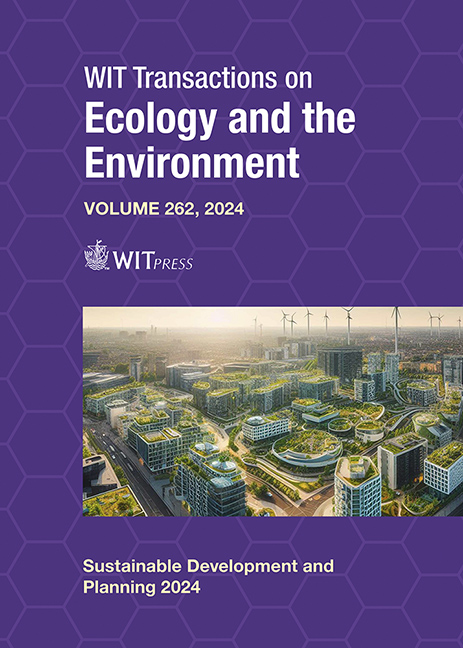IMPACT OF AIRBORNE MICROPLASTICS ON INDUCED SPUTUM OF URBAN DWELLERS: THE ROLE OF ENVIRONMENTAL AND OCCUPATIONAL FACTORS
Price
Free (open access)
Transaction
Volume
262
Pages
12
Page Range
775 - 786
Published
2024
Paper DOI
10.2495/SDP240641
Copyright
Author(s)
JAVIER BAYO, CARLOS BAEZA-MARTÍNEZ, MARTA DOVAL, MIGUEL GONZÁLEZ-PLEITER, EDUARDO GARCÍA-PACHÓN
Abstract
As an emerging environmental problem in our society, microplastic (MP) pollution within the human body is gaining significant attention within the research community, prompting in-depth investigations. This study is based on the analysis of induced sputum samples to investigate the presence of these pollutants and to determine their level of unintentional inhalation by humans. For this purpose, samples from 25 patients with respiratory diseases were prospectively collected, who underwent anamnesis, physical examination, blood analysis and computed tomography. Besides sex, age, smoking habits, occupation, or residence, other variables were considered. After 10% KOH organic matter digestion, samples were observed under an Olympus SZ-61TR Zoom Trinocular Microscope coupled to a Leica MC190 HD digital camera, and an image capturing software Leica Application Suite (LAS) 4.8.0. The chemical composition of MP was analysed by µ-FTIR with a Perkin-Elmer SpotlightTM 200 Spectrum Two instrument, and spectra were compared with Omnic 9.1.26 database and our own database. The abundance of microplastics ranged from 6.25 to 500 items/100 mL of induced sputum. There was no statistically significant difference for abundance between male and female, although active smokers displayed a higher average concentration than former or non-smoker patients. Furthermore, professional occupations with a high exposure risk to microplastics demonstrated significantly higher average concentration. Remarkably, participants residing in urban areas demonstrated a significantly higher average concentration of microplastics compared to those living in rural environments. Also, younger patients showed higher microplastic abundance than older ones. Microplastics smaller than 1 mm accounted for the highest percentage (52.50%), and the most represented size range for microplastics was between 1 and 2 mm (26.25%). The results revealed the identification of seven polymer types, with rayon being the most prevalent, followed by modified cellulose, acrylic, modified cotton, polyester, polyethylene terephthalate and polydimethylsiloxane.
Keywords
microplastic, induced sputum, environment, human health, occupational factors





